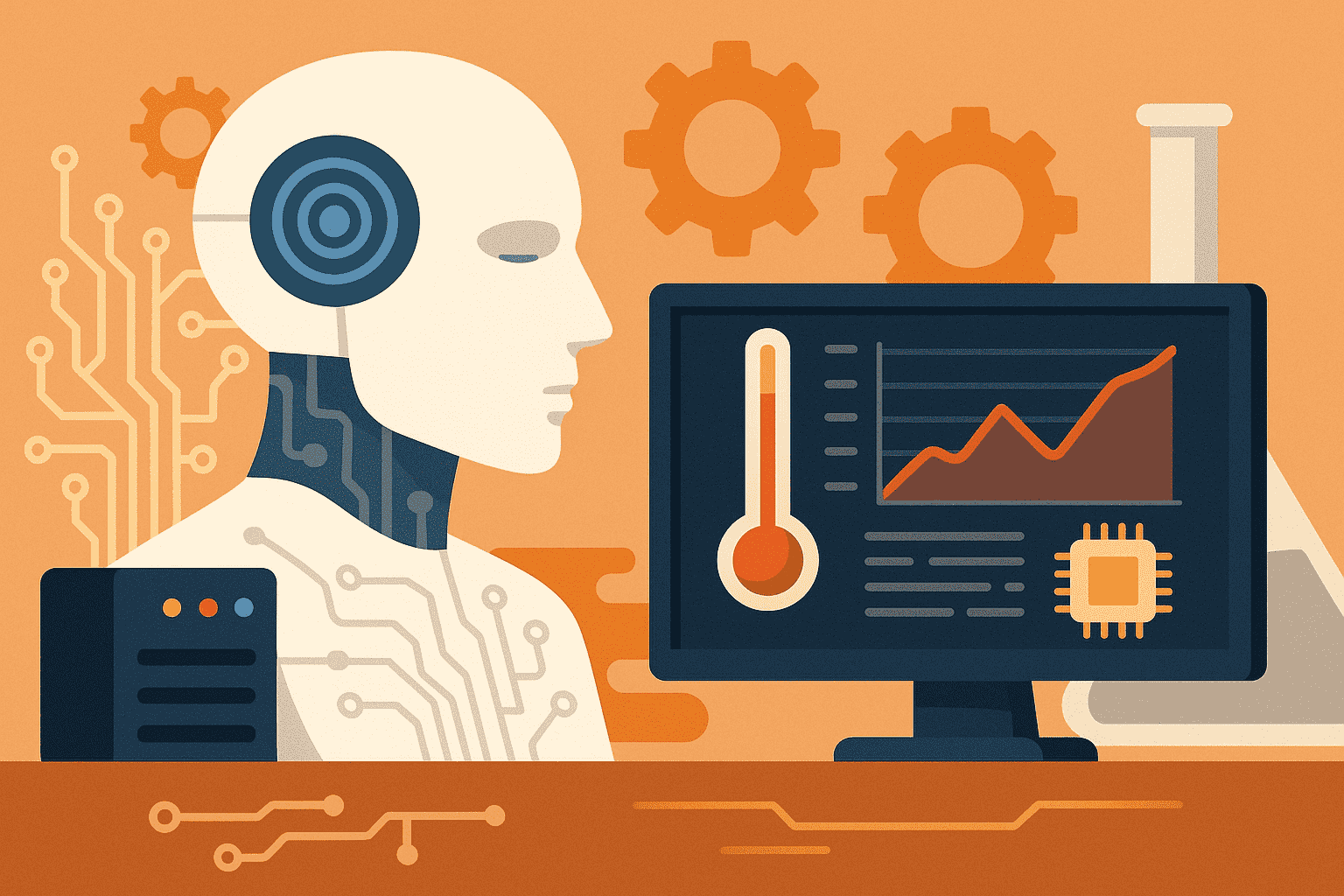Thermal engineering which is related with the higher study of mechanical engineering, deals with the heat and mass transfer, its conversion and storage. Traditionally thermal engineering relied on analytical methods, experimental observations and classical simulations like computational fluid dynamics (CFD). However, with the rise of AI technologies like Machine Learning (ML), Deep Learning (DL) and neural networks, thermal engineering is undergoing a significant transformation.
Comparisons between Traditional approach vs AI based approach
Traditional Approach
Thermal engineers traditionally use first-principle-based models derived from physical laws such as Fourier’s law of heat conduction, Newton’s law of cooling, and the Laws of thermodynamics. Numerical techniques like finite elemental analysis (FEM) are used for simulation for solving complex partial differential equations.
Challenges faced in traditional approach
- High computational cost
- Time consuming simulations
- Difficulty in modelling complex real world scenarios
- Dependence on idealized assumptions
AI based Approach
- Predict outcomes quickly
- Can learn patterns from earlier experimental data
- Optimize designs by exploring vast parameter spaces
- Improve accuracy by learning from experimental data
Key Areas Where AI is Revolutionizing Thermal Engineering
1. Heat transfer and fluid flow predictions
2. Thermal system and design optimization
3. Fault detection and predictive maintenance
4. Energy efficiency and management
5. Material discovery for thermal applications
6. Data-driven modelling of thermal phenomena
AI techniques used in thermal engineering
- Machine Learning (ML)
- Deep Learning (DL)
- Genetic Algorithms (GAs)
- Bayesian Optimization
Real world applications
- Smart buildings
- Automotive industry
- Aerospace engineering
- Power plants
Benefits of AI integration in Thermal Engineering
- Speed
AI systems, such as neural networks or machine learning algorithms, can rapidly complex thermodynamic datasets, predict heat transfer behavior, or simulate thermal systems in seconds.
Example: – AI based CFD tools accelerate simulations of heat exchangers, reducing design cycles from week to days.
- Cost effectiveness
AI reduces the need for extensive experimental trials and prototype iterations by simulating and optimizing thermal system virtually.
Example:- AI can optimize energy usage in HVAC systems by learning from past performance, leading to significant savings on energy bills and maintenance.
- Adaptability
AI system learns and adapt to real-time changes in operational conditions, material behavior, or system loads enabling dynamic thermal management.
Example:- Smart thermal systems in power plants adjust cooling strategies based on ambient temperature, load demands and fuel properties.
- Enhanced decision making
AI supports engineers with real-time insights and optimal solutions using predictive analytics, fuzzy logic, or reinforcement learning, especially in complex multi-variable scenarios.
Example:- In turbine design, AI assists in selecting the best material and cooling techniques based on operating conditions, lifespan goals and cost constraints.
Challenges and limitations
- Data requirements
AI models, especially those based on machine learning and deep learning; require large volumes of high quality data to train effectively. Acquiring such data from real world experiments, simulations or sensors can be time consuming, expensive and sometime impractical.
- Interpretability
Many AI models often provide outputs without clear reasoning behind their decisions. Lack of transparency can make it difficult to trust AI in high stakes applications like thermal plant operations or failure diagnostics.
- Integration complexity
Integrating AI into existing thermal systems requires
Hardware modifications (example: sensor upgrades)
Software interoperability (AI with CFD, SCADA etc)
Training of personnel There is often resistance to change from traditional systems, especially in industries with legacy infrastructure.
- Computational resources
Advance AI models, particularly deep learning and real time predictive analytics, require significant computational power:
- Large memory and storage
- Cloud infrastructure
This can increase operational cost and limit deployment in remote or resource constrained environments (like small plants or rural facilities)
Future trends
- Physics informed machine learning (PIML)
PIML combines data driven models with physical laws (e.g., conservation of energy, thermodynamics) to improve the accuracy and reliability of AI predictions in thermal systems.
- Helps avoid unphysical results in simulations
- Reduces dependency on large data by leveraging known governing equations
Application: – Predicting heat transfer in complex geometries where CFD is costly, but AI informed by physics can give fast, reliable approximations.
- Digital twins
A digital twin is a real time digital replica of a physical thermal system (e.g., a boiler, heat exchanger, or HVAC setup)
- Integrates AI with sensor data to simulate, monitor, and predict performance
- Enables predictive maintenance, failure prevention, and system optimization
Application:- Real-time monitoring of power plant heat recovery systems to optimize efficiency and reduce downtime.
- Edge AI
Edge AI enables data processing directly on devices or near the data source (e.g., sensors, embedded systems), reducing latency and dependency on cloud.
Useful in remote, high temperature or harsh environments where real time action is essential
Application:- On-site heat exchanger performance monitoring in industrial plants using AI chips embedded within the unit
- Sustainable and Green Engineering
AI supports sustainability by optimizing energy usage, reducing emissions, and enhancing resource efficiency in thermal processes
- AI models can simulate eco-friendly materials or design thermally efficient designs
- Enable data driven decisions that align with the global climate goals
Application:- AI optimizing solar thermal systems for maximum energy capture and minimal heat loss under varying weather conditions.
Conclusion
Artificial Intelligence is reshaping the landscape of thermal engineering. By offering faster predictions, enabling better designs, improving energy efficiency, and assisting in predictive maintenance, AI enhances the capabilities of engineers far beyond traditional methods. Although challenges remain, the integration of AI promises a future where thermal systems are smarter, more efficient, and more adaptive.
To leverage the full potential of AI, thermal engineers must embrace interdisciplinary knowledge, combining their expertise in thermodynamics and heat transfer with proficiency in AI technologies. As we move forward, AI will not replace thermal engineers but will serve as an indispensable tool to amplify their innovation and effectiveness in solving the complex thermal challenges of tomorrow.
– Abhimanyu Gadhavi
Assistant Professor, Faculty of Engineering and Technology, Madhav University, Pindwara (Rajasthan)

